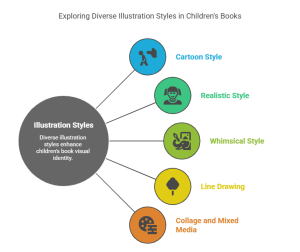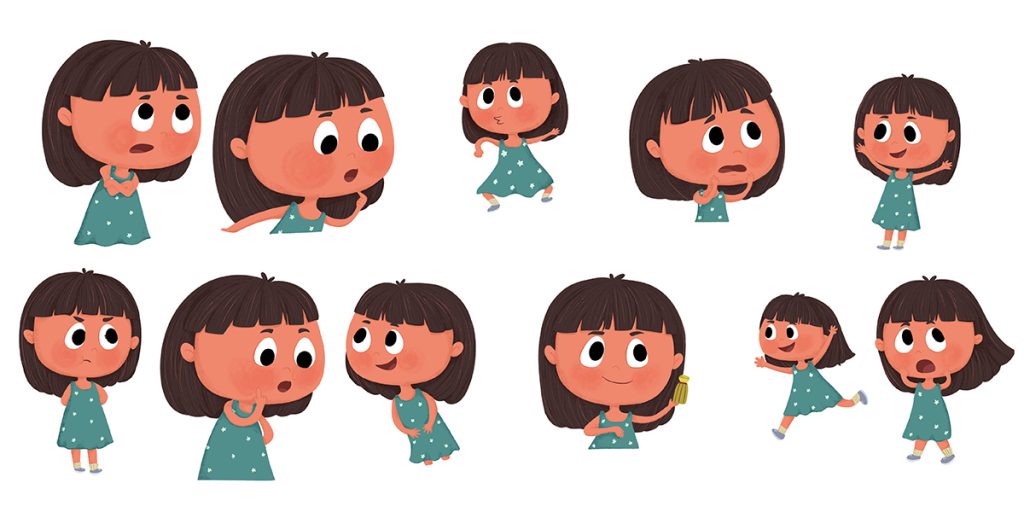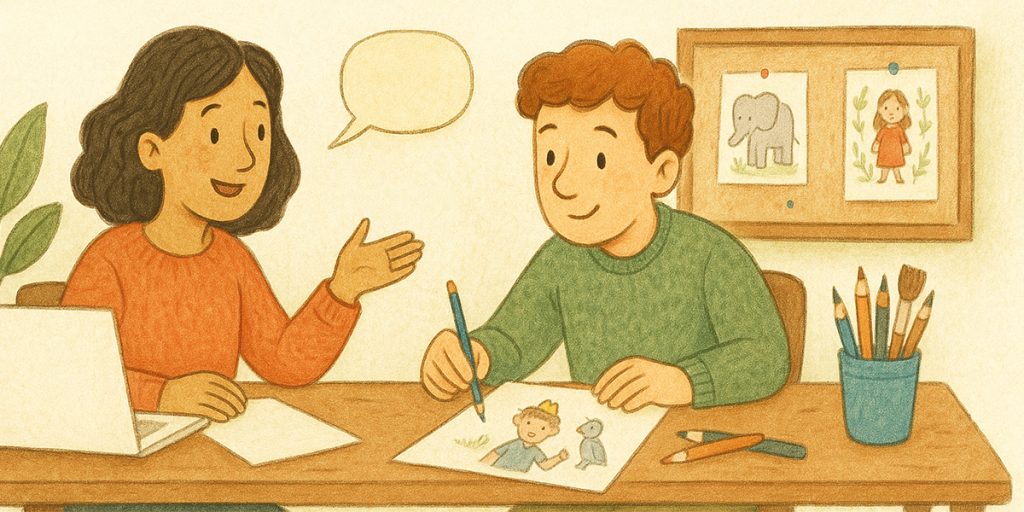Visuals are as essential as words in the ever-changing world of children’s reading. Together, illustration and graphic design are two crucial elements that help young readers find stories interesting, memorable, and pleasurable. Even though they can seem similar at first, each is unique and crucial to the writing of a book. Knowing the difference between graphic design and illustration enables publishers and authors to create books that are both more visually appealing and more effective.
This blog examines the ways in which both fields influence children’s literature and explains how using expert illustration services may enhance narrative to new creative levels.
Understanding Graphic Design and Illustration
Basically, graphic design is a combination of visually appealing elements, including colors, images, and typography, to communicate a specific idea. Graphic design in children’s books makes sure that the reader is led through the story in an enjoyable manner by images as well as text.
On the other hand, illustration is the art of producing visuals that communicate a narrative or add to it. Illustrations are more than just decorations in children’s books; they are an essential component of the narrative and frequently express thoughts and occurrences that words cannot.
Graphic design and illustration possess distinct goals. While graphic design focuses on readability and overall layout, illustration uses detailed artwork to bring characters and scenes to life.
The Role of Illustration in Children Books
Children’s books are primarily illustrated, providing visual narratives that enhance and supplement the text. They make the story easier for young readers to understand, particularly when their language abilities are still developing. By using custom illustration services, authors can make sure that the artwork exactly reflects the tone and meaning of their story.
Interesting pictures can pique readers’ interest, simplify difficult concepts, and offer visual signals that facilitate understanding. Whether it’s a quirky figure or an intricate environment, pictures add significance and memorability to stories.
Also Read:How Custom Illustrations Can Boost Your Brand Identity
Types of Illustration in Graphic Design for Children’s Books
The visual identity of children’s books is greatly influenced by graphic design illustrations. There are numerous illustration styles that are each specifically appropriate for a variety of audiences and story genres.
Cartoon Style Illustration:
Cartoon style is characterized by strong lines, exaggerated characters, and vibrant, lively hues. This approach works particularly well for drawing in young readers and is ideal for humorous, lighter stories.
Realistic illustration:
Characters and scenes are depicted in a realistic way in realistic illustration. It helps kids make the connection between pictures and concepts from the real world and is frequently utilized in educational books or stories based on actual occurrences.
Whimsical Illustration:
Soft hues, fantastical themes, and dreamy, imaginative pictures are characteristics of whimsical illustration. A child’s imagination and feeling of wonder are stimulated by fairy tales and fantastic adventures.
Line Drawing:
Clean, simple outlines are the main goal of line drawing. This style, which is frequently found in coloring and activity books, promotes creativity and interaction.
Collage and Mixed Media
Layering different materials, such as paper, cloth, or textures, to produce rich, complex images is known as collage and mixed media. This gives the illustrations more nuance and individuality.
The emotional tone and intelligibility of a book are improved by selecting the appropriate illustration style.Working with talented experts who provide illustration services ensures that the images accurately reflect the tone and meaning of the narrative.
Graphic Design’s Contribution to Children’s Books
Graphic design ensures that the book is readable and visually unifying, even as visuals draw the reader in. It involves picking color schemes that are attractive to the target age group, arranging written and visual content, and picking suitable fonts.
By effortlessly directing the eye over the page, good graphic design improves the reading experience. It strikes a balance between visual components, making sure that text and illustrations enhance rather than contradict one another. A well-organized arrangement with captivating illustrations enhances the story’s readability and appeal.
Collaborating with Illustration Services
Consulting with specialists who provide custom illustration services can be vital for authors coming into the children’s book market. These professionals use unique art that embodies the plot’s energy to bring stories to life.
Illustrators coordinate closely with authors from the initial drafts to the final designs in order to be sure that each image reflects the story’s thoughts. Their proficiency in a range of artistic methods develops adaptability and originality, producing a distinctive and captivating book.
Conclusion
Illustration and graphic design are two sides of the same coin in children’s books. Illustration adds depth and emotion, helping to make stories bond with young readers, while graphic design organizes and structures content for clarity and appeal.
Producing appealing children’s books requires an understanding of the difference between illustration and graphic design. Authors may produce books that not only convey a tale but also leave a lasting impression by utilizing expert illustration services and careful design.
Whether you’re a seasoned publisher or an aspiring writer, understanding the different but complementary functions of art and graphic design will improve your storytelling and captivate children’s imaginations everywhere.








